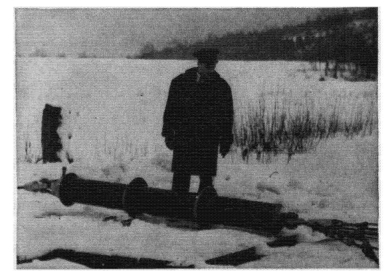| Radio Antenna Engineering is a free introductory textbook on radio antennas and their applications. See the editorial for more information.... |

|

Home  Low-Frequency Antennas Low-Frequency Antennas  Antenna Reactance Antenna Reactance  Aerial Insulators Aerial Insulators |
||||






|
||||
|
Aerial InsulatorsAuthor: Edmund A. Laport The aerial insulators should have high electrical and mechanical strength. They are of two basic types for strain duty - special cylindrical porcelain tubular insulators with cemented end fittings, and the oil-filled safety-core type.
Tubular porcelain insulators have small impact resistance, and an insulator capable of supporting a steady tension load of 6 tons may break when accidentally struck with a wrench or other tool. They must be handled with great care to avoid accidental breakage. The strength of tubular insulators is often limited by the strength of the cemented end fittings, which may be of malleable iron, bronze, or aluminum. Thermal stress on the porcelain may at times be the cause of failure in service due to unequal expansion of the porcelain and the metal. Sometimes the casting will split or the porcelain be crushed. The kind of cement used for attaching the end fitting to the insulator can also be a cause of failure due to weathering and expansion of the cement. There is appreciable leakage loss on plain tubes, and when they are used in multiple, this loss is increased. Losses are often further increased by cross discharge between the insulators when moisture and drip-water distribution is irregular.
For this reason it is best to use a minimum number of units, preferably only one, provided that the unit can sustain the requisite mechanical duty. Leakage loss can be reduced by using grading rings or rain shields, but these reduce the pluming potential, which is then limited by the shields. In the presence of drip water, a uniformly distributed roughness in the form of a wire mesh or expanded metal is more effective than a smooth metallic shield in preventing pluming. The oil-filled safety-core insulator of modern design is available with very high electrical and mechanical ratings and high reliability. Figure 1.6 is a photograph of one form of strain insulator of this type, rated at 150 kilovolts working potential when wet and a working load of 60,000 pounds. Other safety-core insulators appear in Figs. 1.38, 1.41, and 1.43.
|
||||
Home  Low-Frequency Antennas Low-Frequency Antennas  Antenna Reactance Antenna Reactance  Aerial Insulators Aerial Insulators |
||||
Last Update: 2011-03-19


